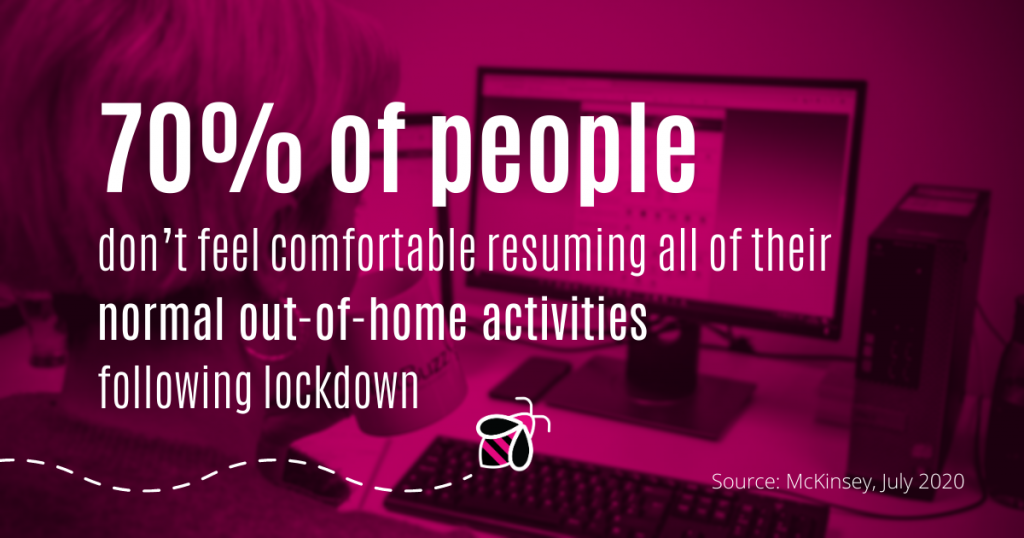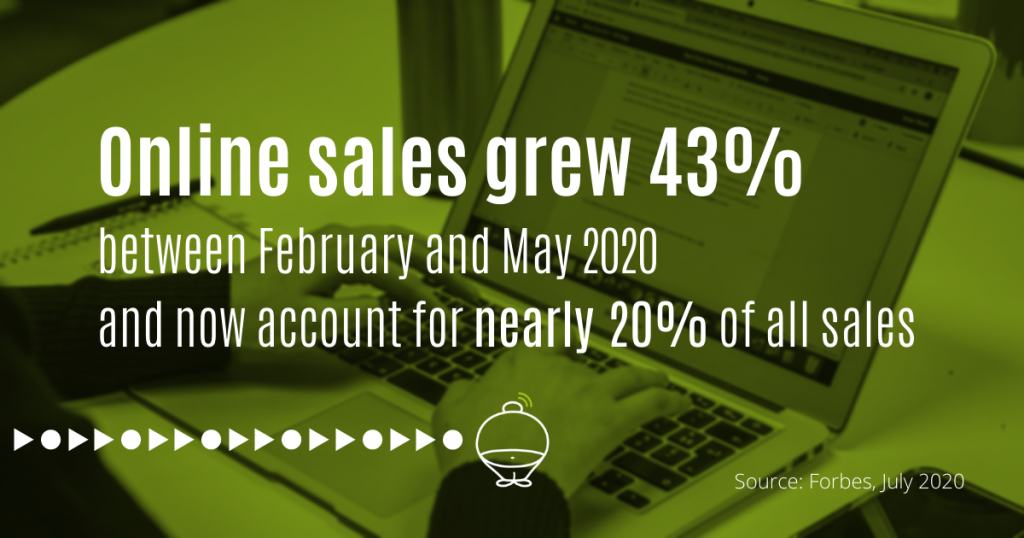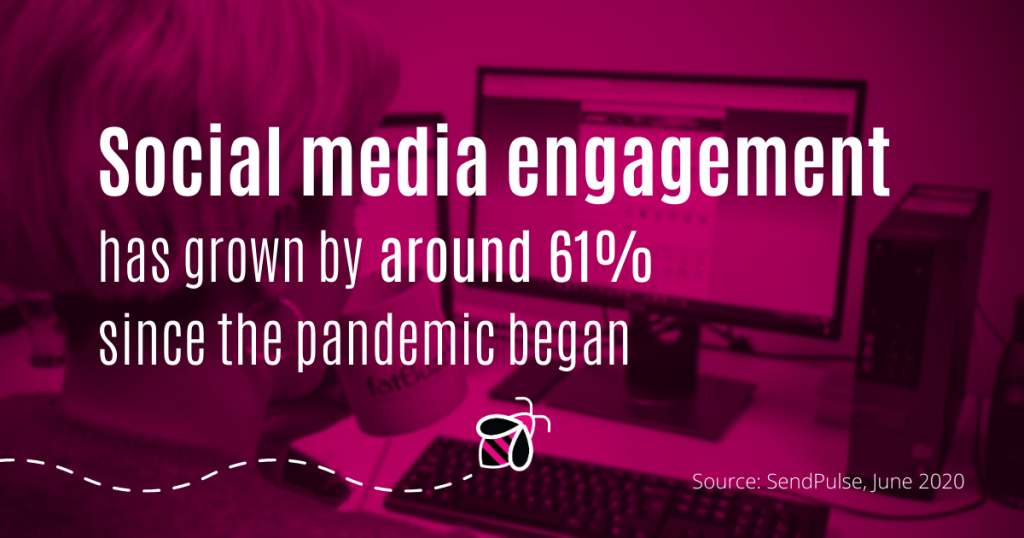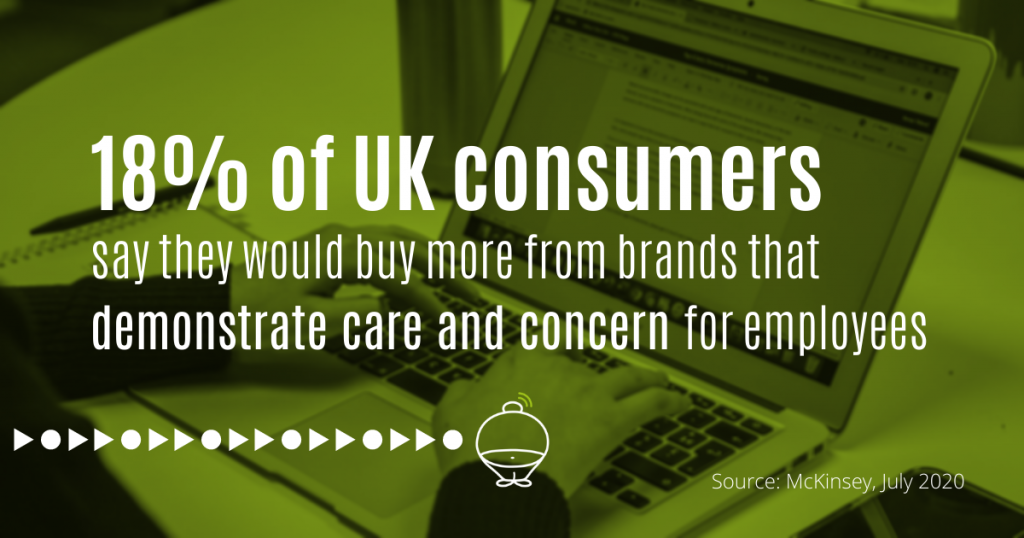Trying to navigate the recent public lockdown has constantly provided marketers with new challenges. For many businesses, each phase has required its own unique plan in order to adapt to ever-changing circumstances.
While both the UK and the wider world may now be slowly opening back up, a McKinsey report from early July says that more than 70% of people don’t feel comfortable resuming all of their normal out-of-home activities. It seems that while much of society begins to re-open, this may not be a complete return to normalcy after all.

A marketing strategy for your return to work
If your marketing plan has been to return to pre-COVID strategies as soon as possible, you may want to rethink your priorities to suit the current state of your industry and the new needs of consumers.
If you’re not sure about where to start with your marketing in a post-lockdown world, we’ve got a few tips based on industry insight that could help you.
From allocating spend to choosing the right formats to establishing the right messaging for your brand, here’s our advice for how you can maximise the effectiveness of your marketing as businesses begin their return to the workplace and resume regular operation:
Keep investing in your online presence
According to a Forbes survey, online sales grew 43% between February and May of 2020 and they now account for nearly 20% of all sales. While those numbers may decrease as brick and mortar stores becomes available again, it is expected that online consumer activity will remain higher than it was prior to lockdown.
Though outdoor advertising may become increasingly relevant again, we wouldn’t suggest pulling money out of your online marketing budget to fund it.

Instead, continue to invest in your online presence by creating a better mobile experience, improving your e-commerce sites, and consider setting your business up on some more social media channels, if relevant.
Social media engagement has grown by about 61% since the pandemic began, with platforms such as TikTok experiencing particularly high growth, so if there’s another platform that can strategically build your profile, it may be worth exploring.
With so much more screen time from consumers during lockdown, videos may be a way to reach those consumers who still aren’t returning to their usual active schedules and who find themselves scrolling to fill the time more often.
Check out our Video Marketing 101 series to read about why you should be investing in video content for your business.

Look for potentially low-cost, high return marketing options
Budgets have been strained over the last few months as incoming revenue has fallen, so you may find that you don’t have the ability to run campaigns that look as glossy and professional as usual. However, this may not be as much of a problem as you think.
Now is the perfect time to collate and promote user-generated content. It’s low-cost to produce (only requiring editing) and can generally feel more relatable and organic than a standard campaign, depending on your market. At a time when consumers need to feel like they can trust brands again, building a strong and engaged consumer base by interacting with and sharing their content can only help you in the long run.
For similar reasons, it may also be an appropriate time to collaborate more with influencers; they often know how to create high-quality photo and video content that appeals to their follower base, but without needing a socially-distanced film crew to do their shoot.
At fatBuzz, we can help you create high-quality video content using photos and footage taken by your community members of staff.
Frequently re-evaluate your strategy
While it may be useful to create a long-term plan that shows how the company will recover by Christmas-time, you should be ready to adapt in the short term and prepare for the unexpected.
With new phases rolling out all the time and possibilities for a second wave of the COVID pandemic, consumer views and habits are frequently changing, alongside changing restrictions on work and travel.
Planning 3 months at a time might be the safest way of ensuring your marketing activities stay relevant and aren’t obsolete by the time implementation rolls around. This smaller calendar planning also allows you to pivot faster as changes take place.
It’s important to make sure that you’re reaching out to consumers frequently during this time to understand their needs, their views, and how their behaviours may have changed.
Make your consumer personas a living document; research and test out your ideas frequently and adjust your next 3-month sprint accordingly.
Messages your customers need right now
Yes, everyone has a bit of COVID-fatigue when it comes to messaging and they probably don’t want to hear the phrases “unprecedented event” or “the new normal” ever again, however there are some messages they’re likely to value hearing.
To increase confidence in going out again – especially important for businesses with a physical high street presence or main premises – it’s important that consumers understand the customer safety measures that have been implemented.
This is a great opportunity to use infographics or video to showcase the changes that have been made over the last few months. If these changes have a big impact on how services are provided, then it is important to note that too, to avoid customer frustration.
It’s also important to showcase to consumers how the brand is demonstrating care and concern for their employees; 18% of UK consumers say they would buy more from brands who show this.

79% of CMOs feel that consumers are more interested than ever in a company’s social activism and attempts to “do good”, so promoting these initiatives, whether they relate to your own workers, world events, or supporting key workers, are some messages that consumers are looking for. Positive, heartwarming stories are more important now than ever as consumers look for a break from the usual news.
In Summary
- Many consumers discovered how easy online shopping is due to the necessity of the coronavirus lockdown, but they are likely to stick with these services even when the old way of doing business returns.
- Budget strains don’t always equate to bad campaigns. Take this as a chance to really connect with your consumer base and build your community.
- Things are changing fast; find a way to keep your strategy flexible in all the uncertainty.
- Let consumers know what to expect and how you’ve risen to the challenges as a business.